The Most Comprehensive Guide to #Polkadot or Top Notch Technology in Plain English
#Web3.0 #WelcomeToTheBlockchain #CryptoBasics
Following is the original Tweeter Thread by Dan Reecer
from the #Polkadot Community (https://cli.co/uV_jSzm)
Polkadot is complicated as hell! This 24-tweet thread is a beginner's guide to
Polkadot $DOT and Kusama Network $KSM in simple English.
What is Polkadot? Kusama? Parachains? Crowdloan and Parachain slot auction?
Comment with other questions and share if you learn something ⤵️
https://pbs.twimg.com/media/Er96N0cXEAgbthz.jpg" target="_blank">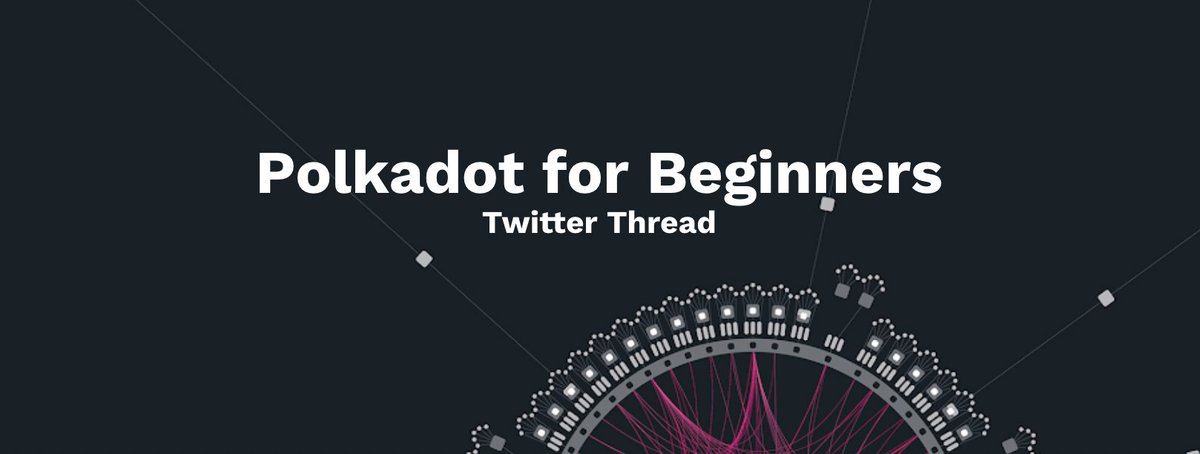
What is Polkadot?
Polkadot is a platform on which blockchain networks are built and connected into one unified network. These connected chains, called parachains, form a living organism of networks all in sync and secure. This forms the foundation on which Web3 will be built.
Dr. Gavin Wood, @ gavofyork, founded Polkadot after inventing the Ethereum Virtual Machine and the Solidity programming language for #Ethereum as the co-founder and CTO. Ethereum wasn't going to scale, and thus, Polkadot was born in 2017. Polkadot Network https://polkadot.network/gavin-wood/
Blockchains built for Polkadot use a dev framework called Substrate (@ substrate_io), the easiest and most advanced blockchain-building framework for coders.
Think of it as drag-and-drop blockchain consensus, or even easier, like Music EQ with dials up & down on certain features.
https://pbs.twimg.com/media/Er9ru0CW4AADjC4.jpg" target="_blank">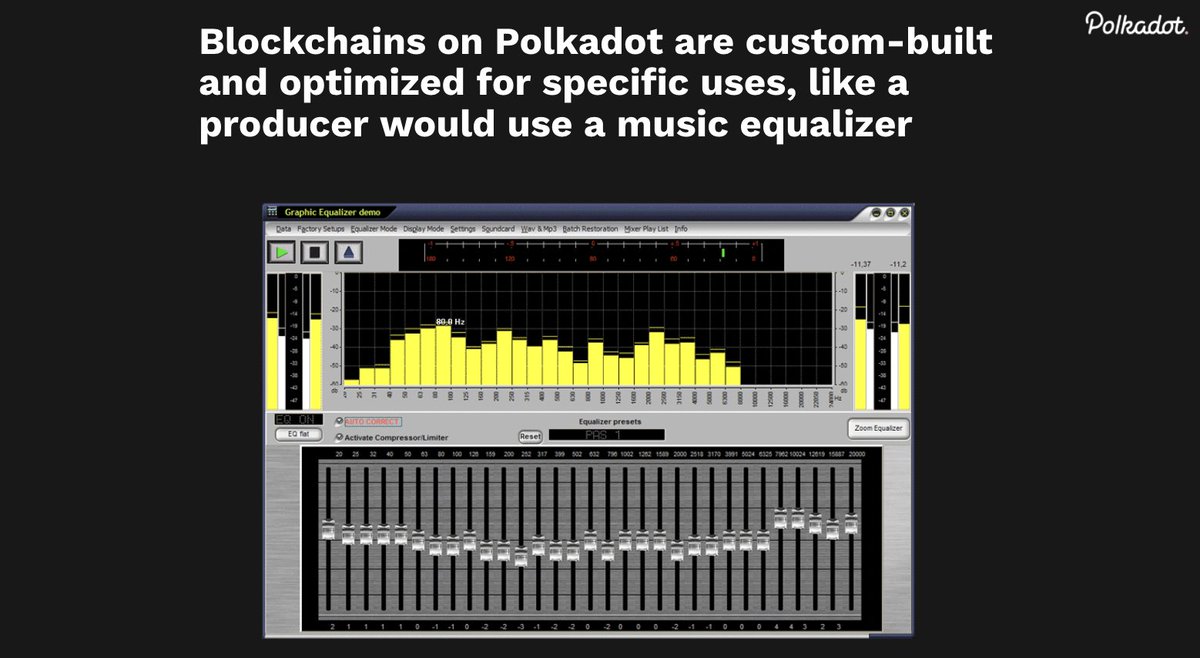
Ethereum is a one-size-fits-all chain. This doesn't work at scale.
Dev teams use Polkadot's Substrate framework to build custom chains for a specific use/vertical, such as @ AcalaNetwork for DeFi, @ PhalaNetwork for Privacy, @ chainlink for Oracles, or @ hydra_dx for liquidity.
Mentions's Substrate framework can also be used to build broad, more general-purpose chains such as for Ethereum-compatible smart contracts on Polkadot (for ETH teams going multi-chain) or for a general Dapp platform (dubbed ETH2 on )
See a repository of the hundreds of Polkadot and Kusama Network projects at polkaproject.com Each chain built on Polkadotis a "parachain".
Legacy networks like #Ethereum are called "layer 1" chains. These are single blockchains, operating in isolation. Parachains are also layer 1 chains. Polkadot is one level below, a "layer zero" multi-chain growing to 100+ networks.
https://pbs.twimg.com/media/Er7-nSeXAAACpoN.jpg" target="_blank">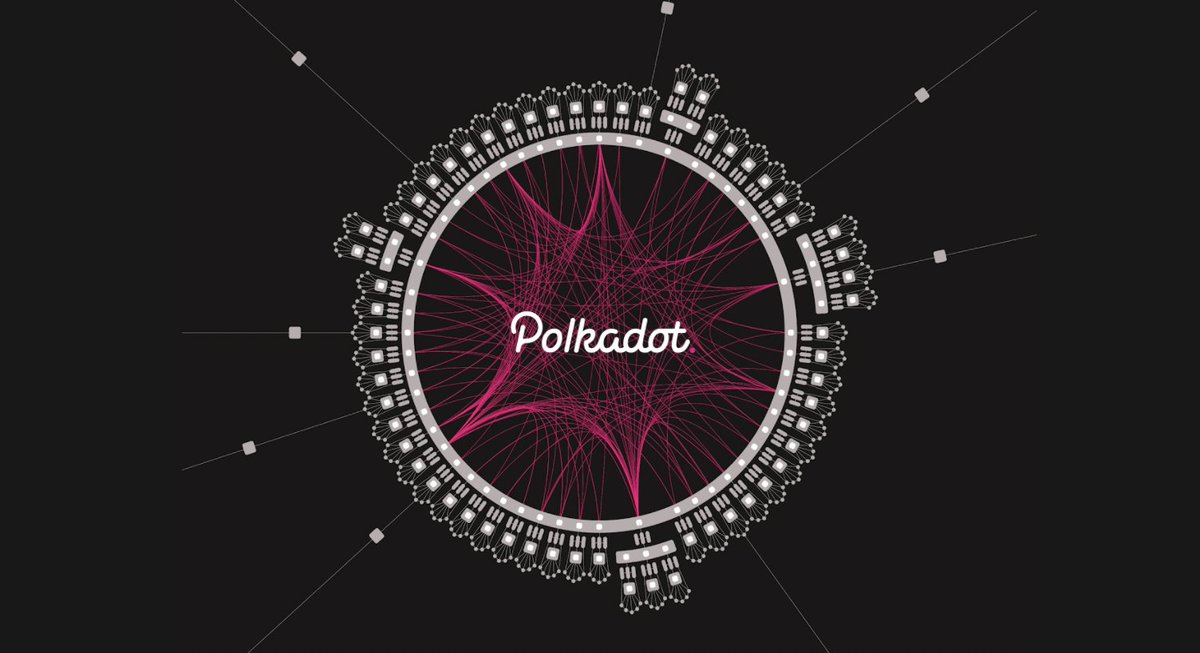
Legacy networks of course will not go away bc Polkadot has launched. Polkadot will be bridged to existing networks like #Ethereum and #Bitcoin via bridges built by teams like @ InterlayHQ (BTC), @ snowfork_inc (ETH), @ ChainSafeth & @ centrifuge (ETH), @ chainx_org (BTC), and more. So, now you understand Polkadot better.
What is #Kusamanetwork?
Kusama is essentially the exact same code/archtr as Polkadot, but its on-chain governance moves 4x faster (7 days) and there are lower barriers to entry for teams to get a slot on the network (more on this below).
Mentions is a mainnet where all code moves after being rigorously tested on testnets such as Westend or Rococo.
The model is Testnet->Kusama mainnet->Polkadot mainnet.
This ensures code is as flawless as possible before going to Polkadot.
https://kusama.network/" target="_blank">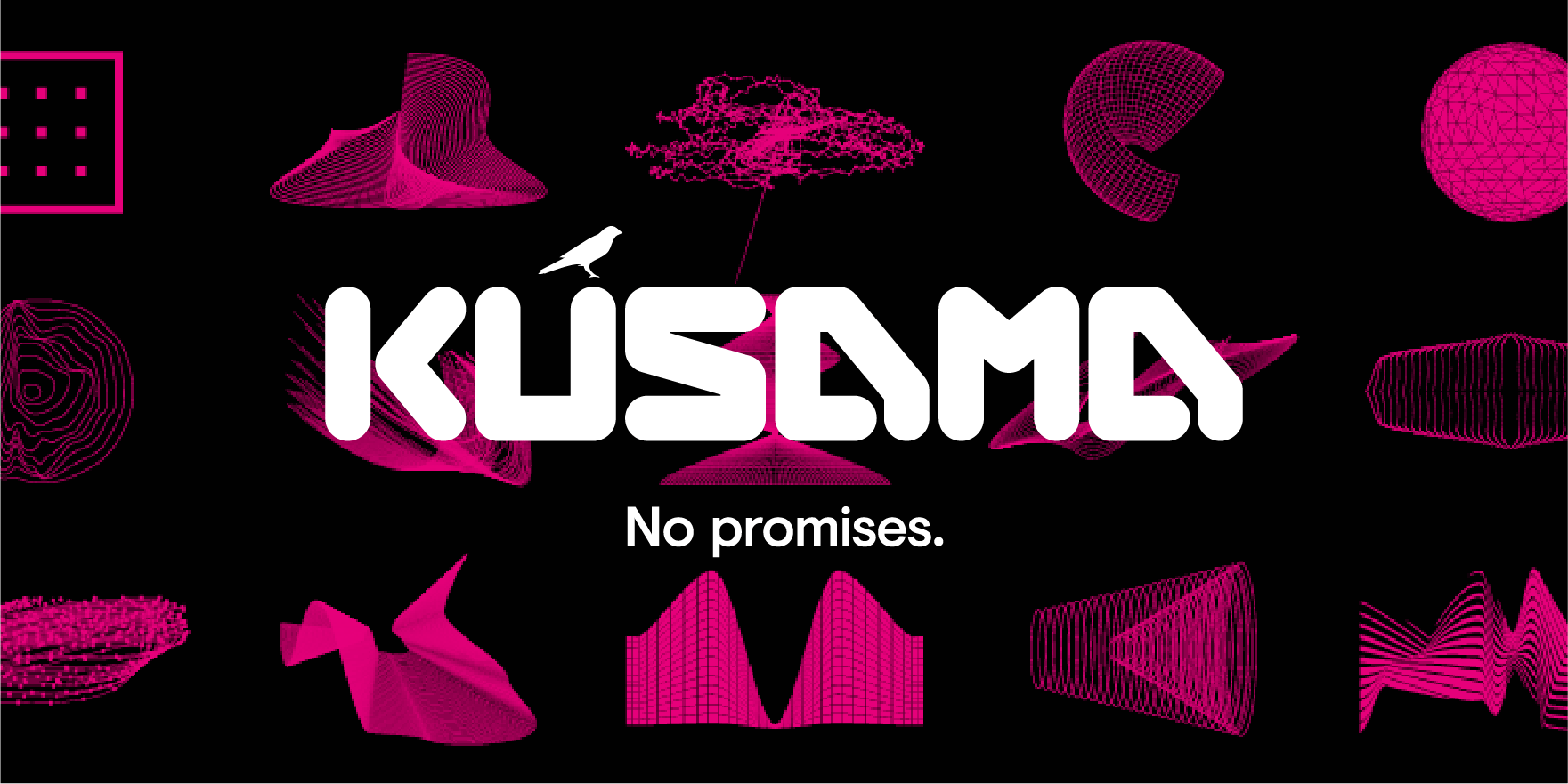
Kusama, Polkadot's Canary Network
Kusama is a scalable multi-chain network for radical innovation and early stage Polkadot deployments. Expect Chaos. No promises. http://kusama.network
The code coming to Kusama network first does bring some risk, which is why Kusama is sometimes referred to as a cypherpunk heaven. This is for lean, fast teams who want to ship code fast.
For the sim/difs between Polkadot and Kusama, check out this post: Kusama & Polkadot: Comparing the Cousins
To serve the needs of both communities/networks, many teams will actually launch on both Polkadot and Kusama Network.
Teams like Acala are launching @ AcalaNetwork on Polkadot and @ KaruraNetwork on Kusama. @ purestakeco is similarly launching Moonbeam (DOT) & Moonriver (KSM).
The #Polkadot $DOT and #kusamanetwork $KSM ecosystems will also be bridged, providing ability to communicate between the networks.
https://pbs.twimg.com/media/Er94HkLXAAMMIj8.jpg" target="_blank">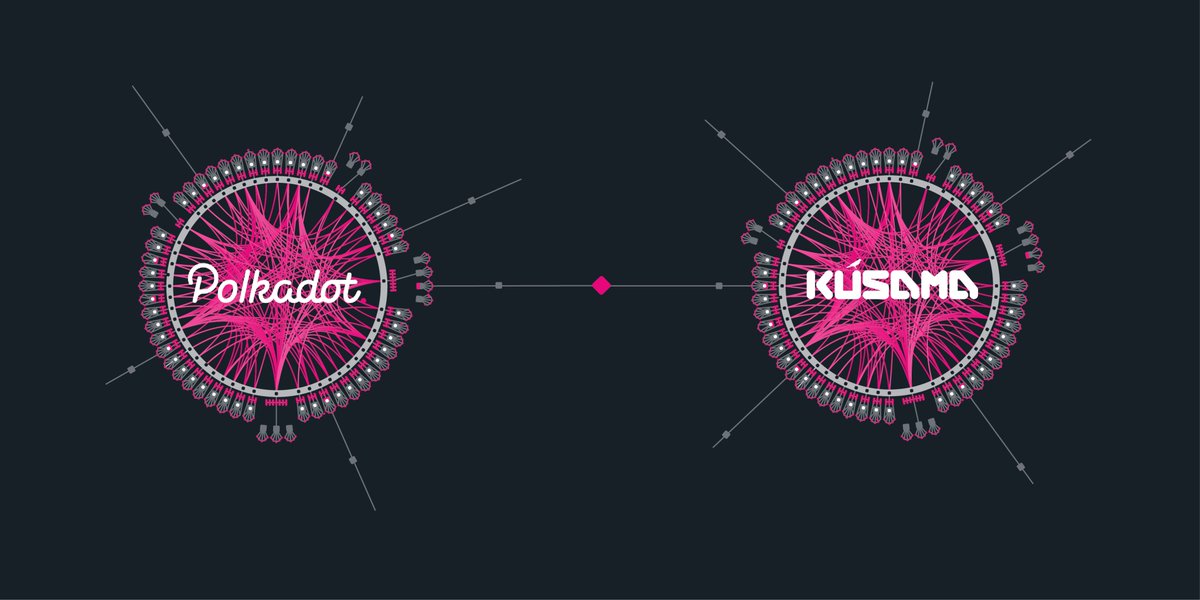
So, now what is a Crowdloan and Parachain slot auction?
Polkadot has 100+ parachain "slots" (see below) which must be 'leased' for access to Polkadot's security and ability to communicate with other chains.
In fact, no team is "built on Polkadot" until they win an auction!
https://pbs.twimg.com/media/Er9wPoOXUAI08b4.jpg" target="_blank">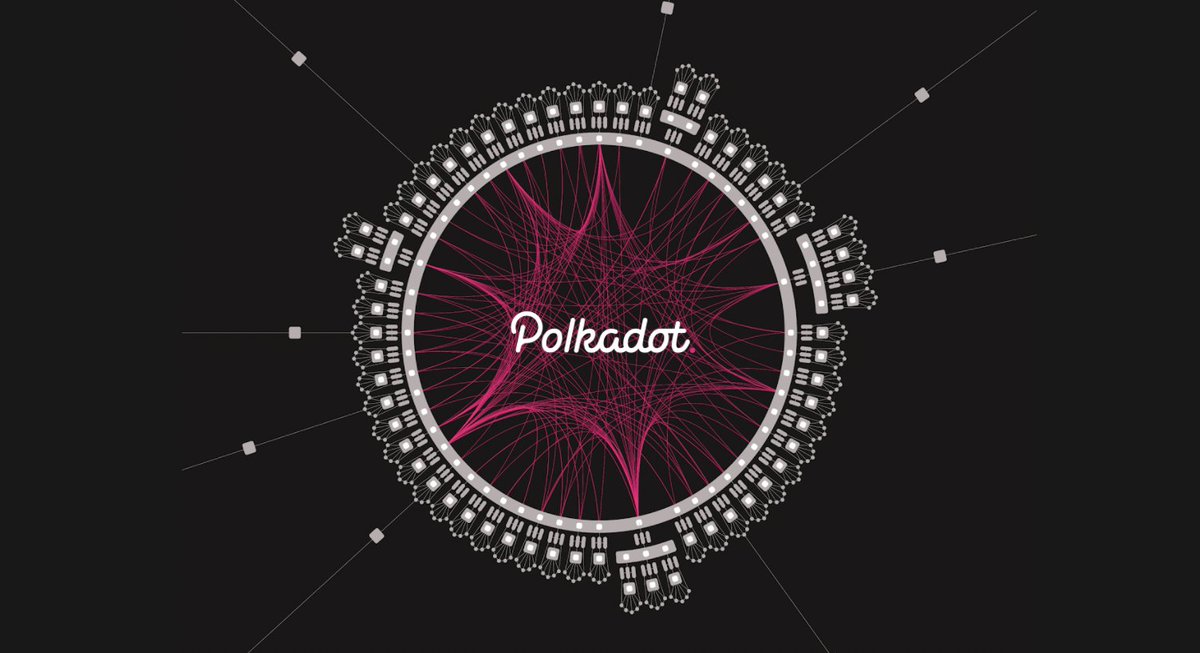
To occupy a parachain slot, any team must win a candle auction using DOT (on #Polkadot) or KSM (on #kusamanetwork). Tokens for this auction can be gathered in a variety of ways, such as self-funding, VC, or a community-driven "Crowdloan".
Candle auction: Parachain Slots Auction · Polkadot Wiki
When a team wins the auction, they immediately gain access to this specific parachain slot, and all the tokens used in the auction are then locked for the duration of the Polkadot parachain’s lease (usually 1-2 years), removing the tokens from circulating supply.
Many teams will host a Crowdloan to gather tokens for the auction. In a Crowdloan, people will contribute/lock their DOT or KSM in support of a parachain's auction. In return they are issued some of the parachain's native token.
All principal is returned after the ~1-2 yr lease. You can read more detail on the Crowdloan process coming up for the Acala team's @ KaruraNetwork's Crowdloan and parachain auction on Kusama in my blog post here
https://medium.com/acalanetwork/karuras-approach-to-the-upcoming-parachain-lease-offering-plo-on-kusama-12fbf09ee463" target="_blank">
Going forward, #kusamanetwork parachain auctions will start, then Polkadot parachain auctions will begin soon after. There will be parachain auctions then happening on a recurring basis, in theory, in perpetuity. If a team doesn't win one auction, they can simply try again.
The plan for Polkadot and Kusama Network is to have 100+ parachain slots occupied at once, with the ability to continue scaling up from there.
This will enable an meta-infrastructure running myriad blockchains and applications on those chains, all in sync and sharing security.
What does Web3 built on Polkadot and Kusama Network look like?
Just like the databases/protocols powering the apps we use every day, end users and consumers shouldn't even know Polkadot and Kusama are there: Web3 apps that operate as good or better than their Web2 counterpart.
The best ways to learn more about Polkadot basics would be to watch @ BillLaboon and my Polkadot for Beginners video - (Polkadot's most viewed video ever), you can spend hours in the incredibly well-done Polkadot wiki...
Comments